TAKEAWAY: So all journalism students should learn how to code the stories they write. In addition, creative directors for media should be expert across platforms. Somehow, the demands of the industry today are not at all in sync with the training available. Reinvention time as we fast move into the coded society.
Update #1: Thursday, Sept. 20, Leon, Mexico, 08:41
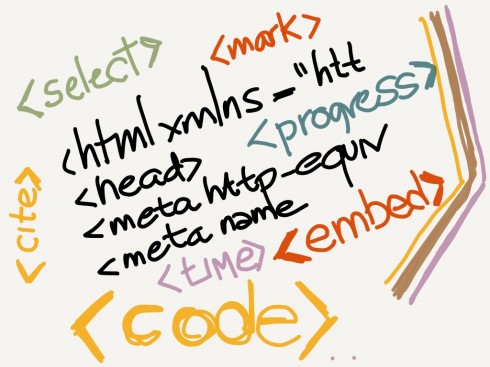
It’s the new four letter word, it seems: code.
To code or not to code, may be the question for today’s reporters to answer, and, more importantly, for journalism educators to ponder as they plan their course syllabi this fall.
No matter where you turn, someone is recommending that we learn more about how to code, in order to become better and more functional and employable people. And this is not just for journalists, but for the population at large.
Take a clue from a column
byThomas L. Friedman, The New York Times’ three-times winner of the Pulitzer prize, inspired by news that public schools in Estonia are establishing a program for teaching first graders and kids in all other grades how to do computer programming.
Friedman writes: “The truth is, if you want a decent job that will lead to a decent life today you have to work harder, regularly reinvent yourself, obtain at least some form of postsecondary education, make sure that you’re engaged in lifelong learning and play by the rules. That’s not a bumper sticker, but we terribly mislead people by saying otherwise.”
The future Thomas L. Friedmans of this world may have to get their programming books out, too, and learn coding. Pronto.
If Miranda Mulligan has her wish granted, then journalism schools will begin teaching coding as part of the storytelling curriculum. Or, writing/editing/designing, and coding.
Here is how Ms. Mulligan describes it:
Learning how to make software for storytelling and how to realize news presentations into code are currently the hottest, most pressing skillsets journalists can study. There has never before been more urgency for our industry to understand enough code to have meaningful conversations with technologists.
And she sees one way to do it effectively:
Journalists should learn more about code. Understanding our medium makes us better storytellers. For an industry that prides itself on being smart, tolerating ignorance of the Internet is just stupid.
Journalism needs hirable graduates that can create sophisticated visual presentations and can realize them in code. But many students are intimidated, not excited, by the tools now fundamental to visual storytelling. In fact, the prevailing sentiment throughout journalism and communications specialties is that we are still intimidated. Maybe this attitude is trickling down to the universities or maybe up from them. But we have all got to get over our fear of the Internet.
She has a point, and I am sure the issue of whether to teach code in journalism schools will have passionate debaters on both sides.
The ever present dilemma in J-schools
It has been a long standing discussion in faculty meetings at journalism schools—-at least the ones I remember sometimes not so fondly (usually too long and political, with little constructive achieved) from my experience as an academic at Syracuse University and the University of South Florida—-whether the time J-students spend getting trained should be spent discussing the more philosophical and abstract, but also important, aspects of becoming a journalist, such as writing/editing/designing or the more practical realities, of which coding may be a part.
For us teaching design, the question has always been whether classroom time should be spent teaching In Design, or Illustrator, as opposed to lecturing on the history of design, the importance of optical research, and the how to design strategies for everything from a newspaper or magazine page to a tablet screen?
I believe that, as in all things, a good balance of the two is what provides for a good course, satisfying the academic needs while preparing students for the shorter term employment opportunities.
With coding, however, it appears that it’s becoming a form of necessary second or third language in which we all need to be at least semi fluent. Either you know it and get ahead, or you don’t and can’t catch the taxi to that next destination on your career plan.
The coded society may not be too far off. We must also find the journalism professors who are equipped to teach coding in their courses.
Sorting through this material makes me think that , when it comes to training, perhaps we are not quick enough to react to the needs of the profession.
In the past two weeks I have been approached by three major metropolitan newspaper executives, all seeking this” creative director” person who is comfortable managing designers and designing across all platforms, including print. This, in essence, is a most sought after persona. I don’t have any names to offer. It may be a similar situation for journalism faculty and the teaching of coding.
These multi platform creative directors and journalism professors are, in my view, still students sitting in a university classroom somewhere, not out in the work pool, which poses an alarming question: while the needs are here and now for a specifically trained individual, we are not nearly prepared to supply them.
Waiting, I am afraid, is not an option. I suggest quick reinventions for those who are on the job and would like to not just secure that job, but climb to the next level.
Of related interest
Want to be a reporter? Learn to code
http://gigaom.com/cloud/want-to-be-a-reporter-learn-to-code/
Emory University to phase out journalism program
– University to close journalism program amidst calls to improve journalism education in the U.S.
http://knightcenter.utexas.edu/blog/00-11413-university-close-journalism-program-amidst-calls-improve-journalism-education-us
This is definitely not good news for our profession. At a time when we need better equipped journalists, and with the fastest revolution in information taking place, we definitely need for colleges and universities to emphasize storytelling. The decision at Emory University (of Atlanta) to eliminate the journalism program does not make much sense.
Now that everyone is a “journalist” if he is armed with a smartphone, we need to make sure that the real journalists are there to pick up the story where the Twitters left it, to develop it, to provide the background and the analysis.
I am almost certain that the Emory University administrators who made the decision, one that “stunned the faculty” (and I am sure students, both present and prospective ones), are doing so for reasons that may have to do with budgetary constraints. It is true that the demands for journalism schools in the digital era are greater (and not just because students must be taught new and different skills, such as the coding issue discussed above), but that is one reason to strengthen, not phase out, journalism programs.
USA TODAY’s ball of fire logo

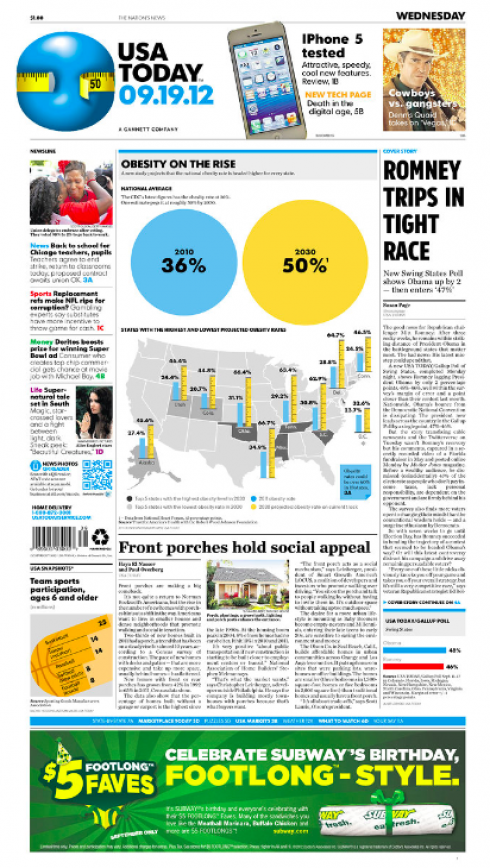
It’s interesting how there is always one aspect of a redesign that stands out in conversations following the launch of the new look.
It seldom is the one issue that caused the debate internally during the course of the redesign.
For USA TODAY, it is the “ball” in the logo. Some call it “the fun ball”, others play a game to see what the “USAT ball” will look like.
I travelled from Florida to Texas to Mexico Wednesday and saw the fun ball logo up close and personal at the airports. Since the lead story is about obesity in America, the logo tried to reflect the situation.
Logos were never so much fun, or such an integral part of the storytelling process.
Related: about the use of Futura Today in USA TODAY:
http://www.boldmonday.com/en/usatoday
Of special interest today:
– UK: Guardian Promotes Separate Tablet Subscriptions for Sports News
http://paywall-times.com/index.php/guardian-promotes-separate-tablet-subscriptions-to-sports-news/
– UK: The digital readership is out there. But is there money too?
http://www.guardian.co.uk/media/2012/sep/16/combined-digital-print-figures-ad-revenue
– USA: Boston Globe Editor: Newspapers Are Badly Bruised, But Not Beaten
http://jimromenesko.com/2012/09/17/boston-globe-editor-newspapers-are-badly-bruised-but-we-are-not-beaten/
– USA: Chicago Tribune to replace free TV tabloid with TV Weekly
http://www.publicitas.com/en/global/press-news/media-news/news-detail/?no_cache=1≠wsid=87606
– New WSJ universal app opens up some news content while locking down the rest; design mimics print while still being native to the tablet and smartphone
http://talkingnewmedia.blogspot.de/2012/09/new-wsj-universal-app-opens-up-some.html
– Al Jazeera English launches iPad magazine
http://www.journalism.co.uk/news/al-jazeera-english-hopes-new-digital-magazine-will-help-showcase-in-depth-offering/s2/a550376/
– UK: Express & Star relaunches website using responsive design technology
http://www.pressgazette.co.uk/express-%26-star-relaunches-website-using-responsive-design-technology
– Fairfax Media (Australia) releases attractive news app for The Canberra Times; app resides in Apple’s Newsstand but does not currently ask for a paid subscription
http://talkingnewmedia.blogspot.de/2012/09/fairfax-media-australia-releases.html
Sign up to get information on my new digital book
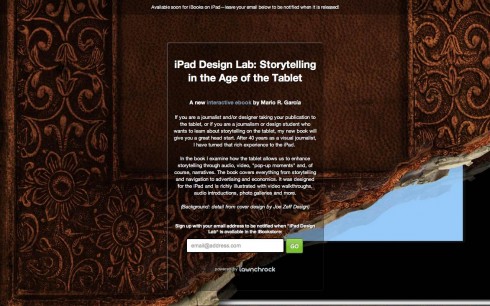
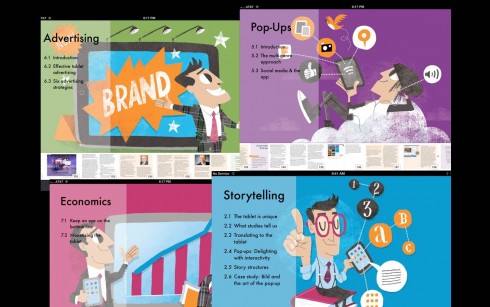
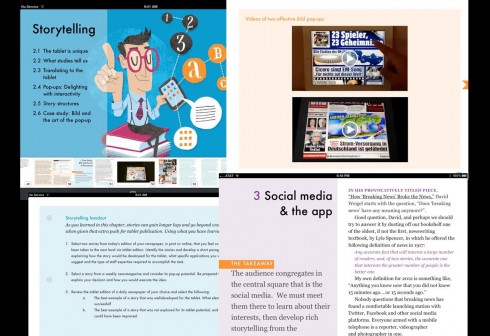
Assorted screens from the book: top, chapter openers all of which are color coded and carry illustrations by Luis Vazquez, of the Gulf News of Dubai; second image, opener of Storytelling chapter, and two inside screens.
As we get closer to publication date for The iPad Lab: Storytelling in the Age of the Tablet, we are now set up so that you can give us your email address and you will automatically be informed when the book is ready for download.
Now you can leave your email address so that you will be updated and informed the moment the book is read for download.
Simply go here:
http://ipaddesignlab.com
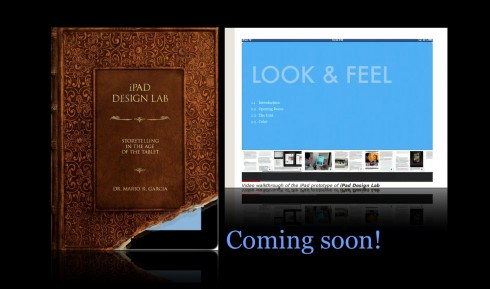
Video walkthrough of the iPad prototype of iPad Design Lab
SND Scandinavia Space 2012 conference
Still time to get a spot to attend the SNDS conference in Copenhagen, Sept. 27-29;
For more information:
SNDS workshop ever. Read all about SPACE 2012 here:
1st Middle East News Design Conference
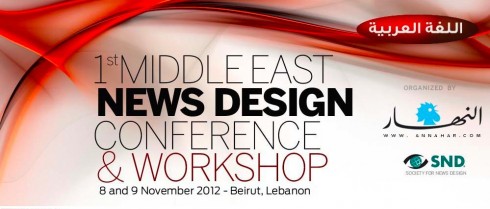
It promises to be a great program, and a historic one, too: the first SND Middle East gathering. Put it on your calendars: November 8 & 9, in Beirut, Lebanon. Sponsored by An-Nahar and SND.
For more information:
http://www.snd20events.com/conference/